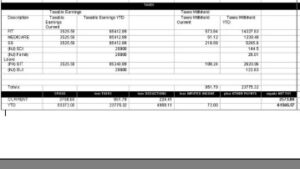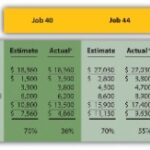Content
One thing to remember is that the price of a bond is inversely related to the interest rate. When interest rates go up, the price of a bond goes down, and vice versa. After calculating cash flow, discount the expected cash flow to the present.

To further explain, the interest amount on the $1,000, 8% bond is $40 every six months. Because the bonds have a 5-year life, there are 10 interest payments (or periods). The periodic interest is an annuity with a 10-period duration, while the maturity value is a lump-sum payment at the end of the tenth period. The 8% market rate of interest equates to a semiannual rate of 4%, the 6% market rate scenario equates to a 3% semiannual rate, and the 10% rate is 5% per semiannual period. This means that if a firm were to issue $3 million in bonds with a 10% interest rate, it would receive $3 million and pay back the amount in future interest payments.
Bonds Issued in Between Interest Payments
Lighting Process, Inc. issues $10,000 ten‐year bonds, with a coupon interest rate of 9% and semiannual interest payments payable on June 30 and Dec. 31, issued on July 1 when the market interest rate is 10%. Discount on bonds payable is a contra account to bonds payable that decreases the value of the bonds and is subtracted from the bonds payable in the long‐term liability section of the balance sheet. Initially it is the difference between the cash received and the maturity value of the bond. On July 1, Lighting Process, Inc. issues $10,000 ten‐year bonds, with a coupon rate of interest of 12% and semiannual interest payments payable on June 30 and December 31, when the market interest rate is 10%. Premium on bonds payable is a contra account to bonds payable that increases its value and is added to bonds payable in the long‐term liability section of the balance sheet.
Because mortgages can be refinanced, bonds that are backed by agencies like GNMA are especially susceptible to changes in interest rates. The families holding these mortgages may refinance (and pay off the original loans) either faster or slower than average depending on which is more advantageous. It’s the outcome of a complex calculation that includes the bond’s present value, yield, coupon, and other features. It’s the best way to assess a bond’s sensitivity to interest rate changes—bonds with longer durations are more sensitive.
Maturity & duration
The premium will disappear over time and will reduce the amount of interest incurred. When a corporation makes a written promise to pay an organization later, it is known as notes payable. Like bonds, notes usually require that interest payments are made over time.
After the payment is recorded, the carrying value of the bonds payable on the balance sheet increases to $9,408 because the discount has decreased to $592 ($623–$31). The interest expense is amortized over the twenty periods during which interest is paid. Amortization of the discount may be done using the straight‐line or the effective interest method. Currently, generally accepted accounting principles require use of the effective interest method of amortization unless the results under the two methods are not significantly different.
National Debt
While the interest rate is fixed, the amount of interest you get every six months may vary due to any change in the principal. Like bonds and notes, the price and interest rate are determined at the auction. Interest from these bonds is free from federal income tax, as well as state tax in the state in which it’s issued. Because of the favorable tax treatment, https://kelleysbookkeeping.com/ yields are generally lower than those of bonds that are federally taxable. These bonds (also called “munis” or “muni bonds”) are issued by states and other municipalities. They’re generally safe because the issuer has the ability to raise money through taxes—but they’re not as safe as U.S. government bonds, and it is possible for the issuer to default.

It then amortizes the premium over the remaining period of the bond, which results in a reduction in the recognized amount of interest expense. It then amortizes the discount over the remaining period of the bond, which results in an increase in the recognized amount of interest expense. There are generally two ways to calculate the bond’s cost amortization which are as straight-line method and the effective interest rate method. As the interest rates Valuing Bonds Payable changes in the market, the interest which a corporation is supposed to give on a bond is at times higher or lower than the interest rate it actually gives to the investors. Bond discount is a condition when an investor pays less than the face value of the bond which represents a higher interest rate than what for the bond was issued for. One simple way to understand bonds issued at a premium is to view the accounting relative to counting money!
The book value (or carrying value) of the bonds payable at December 31 was $9,630,000. The second component of a bond’s present value is the present value of the principal payment occurring on the bond’s maturity date. The principal payment is also referred to as the bond’s maturity value or face value.

For 20X4, interest expense is roughly 6.1% ($6,294 expense divided by beginning of year liability of $103,412). The present value factors are taken from the present value tables (annuity and lump-sum, respectively). Take time to verify the factors by reference to the appropriate tables, spreadsheet, or calculator routine. The present value factors are multiplied by the payment amounts, and the sum of the present value of the components would equal the price of the bond under each of the three scenarios. The Bureau of the Fiscal Service, administers the public debt by issuing and servicing U.S. The articles and research support materials available on this site are educational and are not intended to be investment or tax advice.